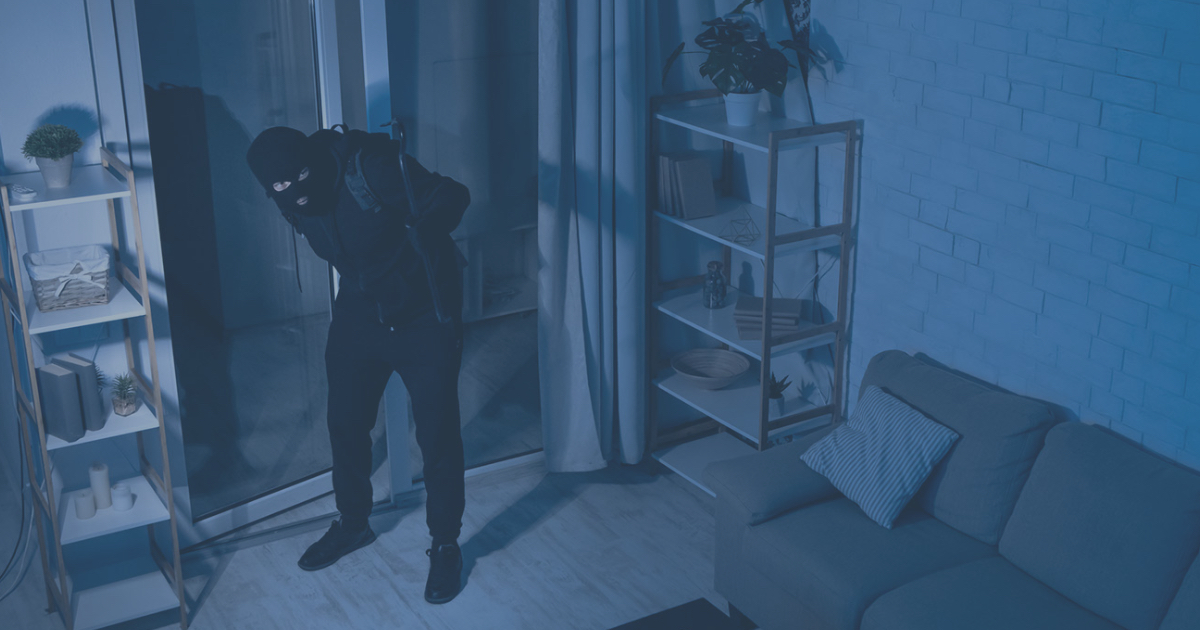A recent appellate decision from Maryland provides a helpful example of how homeowners (and by extension business owners) can be utilized to authenticate video recordings and illustrates who is permitted to express an opinion on the identification of someone shown in the recordings.
In Frayne v. State of Maryland, 2021 WL 5358880 (Court of Special Appeals of Maryland), the relevant facts are as follows. A burglar entered an unlocked home while the homeowners (Billy and Eileen) were outside and began amassing items to pilfer. Eileen entered the home and discovered the burglar who threatened and assaulted her in an unsuccessful attempt to get the combination to the gun safe. Eileen alerted her husband as to what had just happened and gave him a description of the fleeing burglar. Billy gave chase in his vehicle and found someone bearing a similar appearance to the burglar running away from the direction of his home. At one point, the suspect dropped something and when he turned around to get it, he looked at Billy and ran off. After the brief chase, Billy returned home to attend to his wife and awaited the arrival of the police and EMS. The burglar was apprehended by police at a nearby establishment and some of the items stolen during the burglary were found in his possession.
Home surveillance video evidence proved to be critical at trial. Billy had installed three motion-activated cameras that were set to record in 30 second intervals and which automatically uploaded video files to an application on his smartphone. One of the cameras was mounted in the room where the gun safe was located and was the room where the burglar spent most of his time. The video recordings were automatically date and time stamped with the correct time and showed the burglar in the gun safe room for 17 minutes. As the police were unable to export the video recordings from Billy’s smartphone, a relative of the homeowners downloaded the recordings for them and emailed them to the police who in turn transferred them to a CD which was tendered as an exhibit at trial.
At trial, Billy testified regarding the installation and operation of the home surveillance CCTV system. He testified that the system was operating correctly and that the date and time stamps were accurate. Three police officers testified that the burglar shown in the surveillance video was the defendant, whom each of the officers knew from previous encounters over the past decade. Billy testified that the defendant was the person shown in the surveillance video and was also the person he pursued afterwards. Billy, a former police officer, also had previous encounters with the defendant.
The defense argued that neither the pictorial testimony (illustrative evidence) or silent witness theories for admission applied since no evidence was provided as to how the recordings on the smartphone were compiled on the CD exhibit. The state argued that the video recordings were admissible under either theory of admissibility or a combination of both. The Court noted that under the pictorial testimony approach, video recordings can be admitted through the testimony of a witness with knowledge as to the content recorded and that under the silent witness theory, evidence is required as to the process or system that recorded the videos. Here, the homeowner provided sufficient testimony as to the installation and operation of the CCTV system, including motion activation, the 30 second clips produced, the infrared capability, the accuracy of the date and time stamps, where the digital files were stored, and how they were downloaded. He was also able to identify all the content shown as being in his gun safe room. The Court ruled that the trial court was correct to admit the video recordings under both the pictorial testimony and silent witness theories of admission and that the evidence presented was sufficient for a reasonable juror to find on the preponderance of evidence that the images were what they were purported to be. Accordingly, the convictions entered at trial were upheld on appeal.
Analysis
The value of a case study is that it provides a venue to restate existing law and its application in the context of an actual case. All too often counsel lead insufficient evidence regarding the authentication of home and business CCTV video evidence. In such cases, admissibility will be found wanting as a result. The Frayne case illustrates how easily authentication can be proven. The core of the homeowner’s direct evidence on authentication likely took only minutes to impart on the witness stand as it was not complex or overly technical in nature. Further, the homeowner does not need to know all there is to know about the CCTV system – a basic user-focused amount of knowledge suffices.
Frayne is also a helpful example of how to properly use video as evidence of identification. The witnesses who gave their opinion regarding identification of the burglar all had previous familiarity with the defendant and were therefore lawfully permitted to express an opinion on video identification. Though this is a well-recognized restriction, cases still appear wherein witnesses without such prior knowledge are asked to express an impermissible opinion on video identification. This was not an issue that was argued in this case, likely because it was readily apparent that the state had properly led their evidence.
Frayne does not create new law. Rather, it helpfully summarizes existing Maryland law on authentication and evaluates the case facts in that context. The Maryland approach is largely the same law that is applied across North America. When I argued case law as a prosecutor, I would present cases that stated the law and cases that were examples of the application of the law. The Frayne case ticks both boxes.
